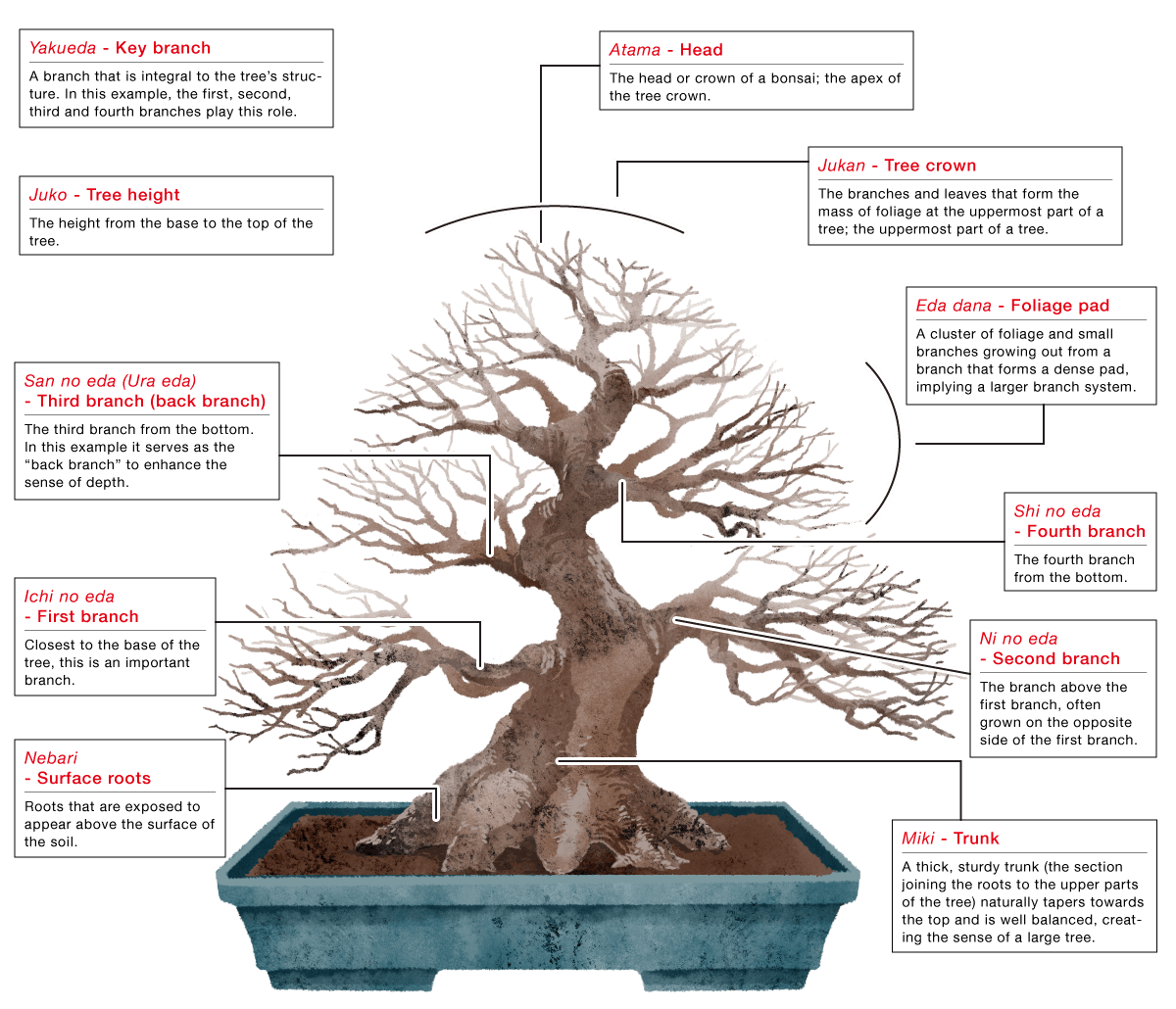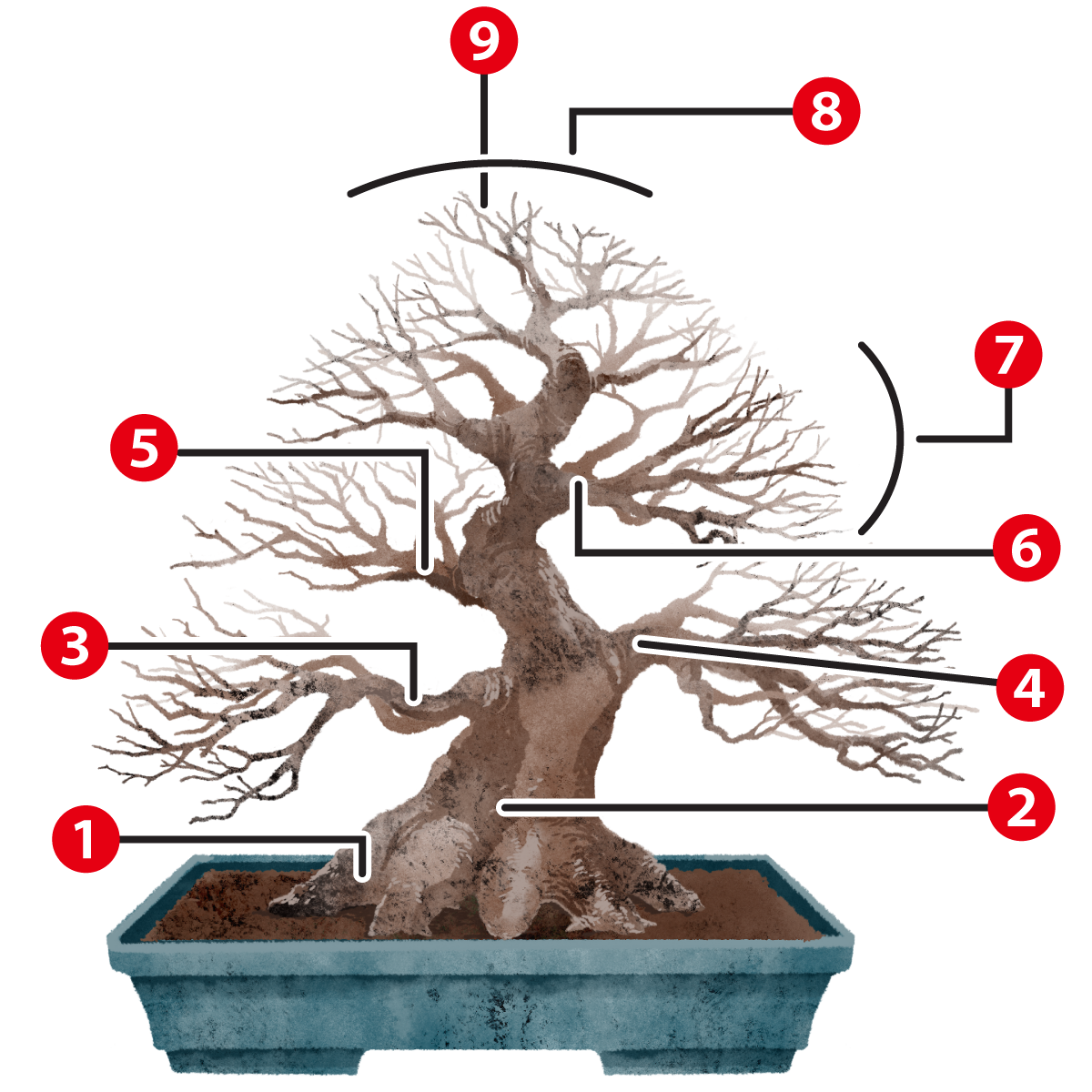The various ways of creating bonsai are all named. Every element plays an important role in the bonsai’s creation, so remembering the names allows for a deeper understanding of bonsai.
This post is also available in: CN (CN) TW (TW) JP (JP)


❶ Nebari – Surface roots
Roots that are exposed to appear above the surface of the soil.
❷ Miki – Trunk
A thick, sturdy trunk (the section joining the roots to the upper parts of the tree) naturally tapers towards the top and is well balanced, creating the sense of a large tree.
❸ Ichi no eda – First branch
Closest to the base of the tree, this is an important branch.
❹ Ni no eda – Second branch
The branch above the first branch, often grown on the opposite side of the first branch.
❺ San no eda (Ura eda)- Third branch (back branch)
The third branch from the bottom. In this example it serves as the “back branch” to enhance the sense of depth.
❻ Shi no eda – Fourth branch
The fourth branch from the bottom.
❼ Eda dana – Foliage pad
A cluster of foliage and small branches growing out from a branch that forms a dense pad, implying a larger branch system.
❽ Jukan – Tree crown
The branches and leaves that form the mass of foliage at the uppermost part of a tree; the uppermost part of a tree.
❾ Atama – Head
The head or crown of a bonsai; the apex of the tree crown.
❿ Yakueda – Key branch
A branch that is integral to the tree’s structure. In this example, the first, second, third and fourth branches play this role.
⓫ Juko – Tree height
The height from the base to the top of the tree.



